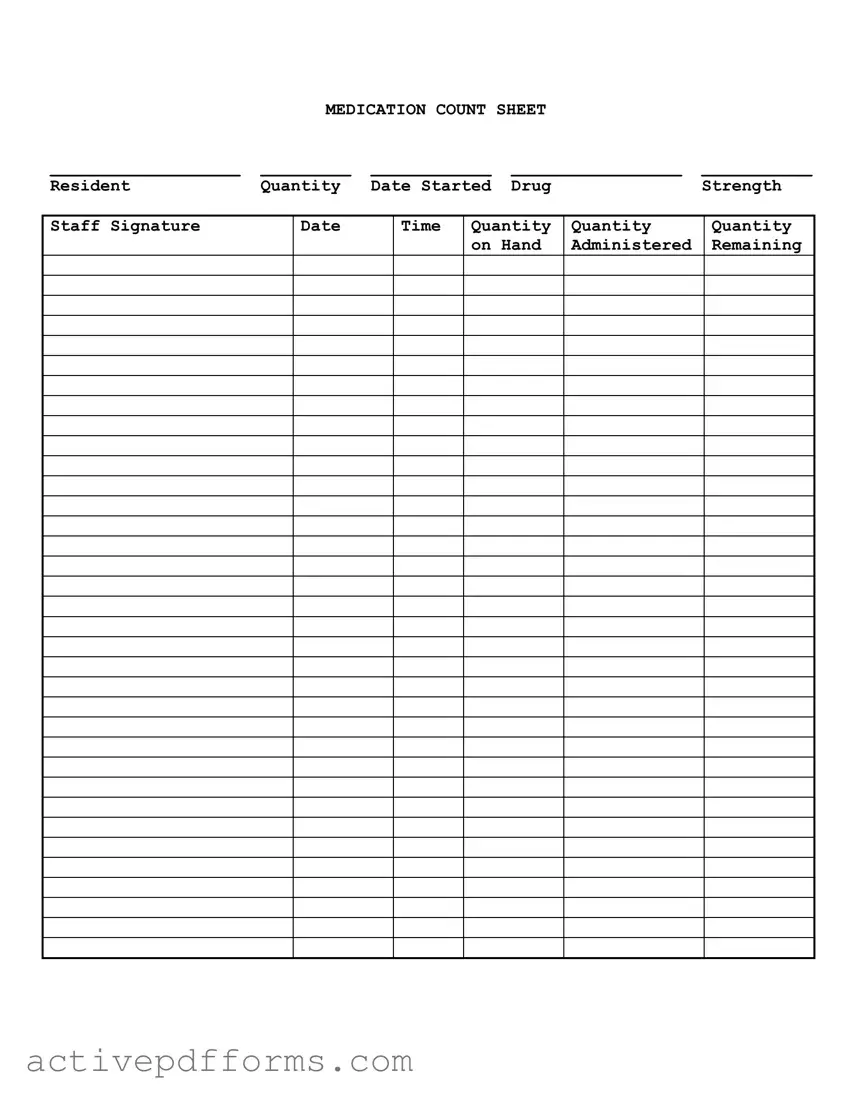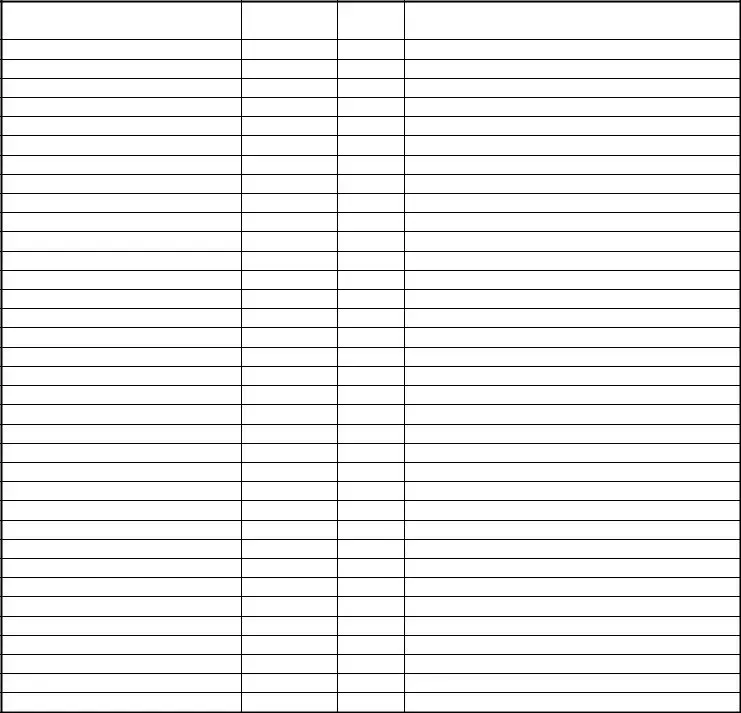Free Medication Count Sheet PDF Template
The Medication Count Sheet form is a crucial document used in healthcare settings to track the administration of medication to residents or patients. It meticulously records the name of the resident, the quantity of medication started, the date and time of administration, drug strength, and the staff member's signature. This form ensures accuracy and accountability in medication management, keeping a detailed log of the quantity of medication on hand, administered, and remaining.
Edit Medication Count Sheet Now

